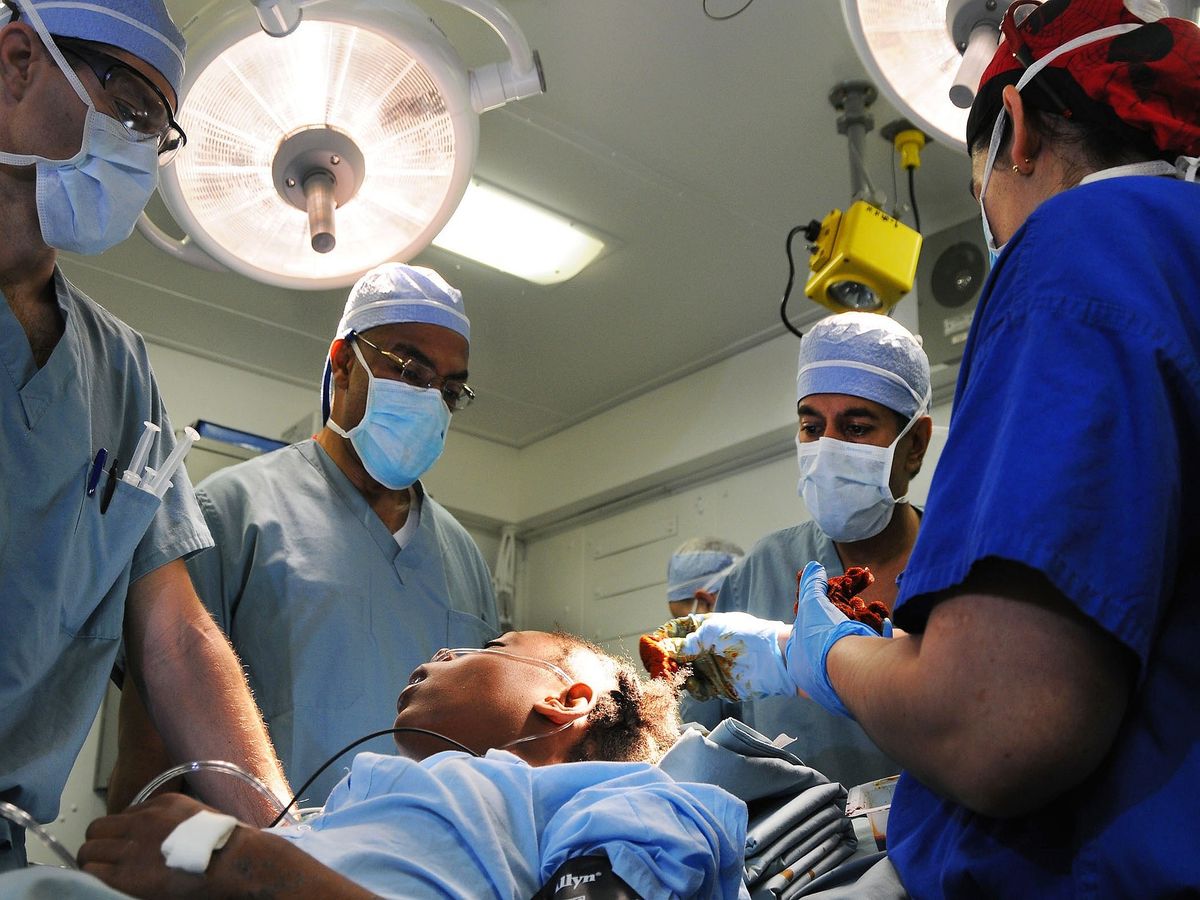Importance of sterile gloves
Sterile gloves are special gloves that are free from any microorganisms like bacteria and viruses. They’re crucial in medical settings to prevent the spread of infections during procedures or when handling sensitive materials. Think of them as protective shields for your hands, ensuring that no harmful germs come into contact with patients or medical equipment. Using sterile gloves helps maintain a clean and safe environment, reducing the risk of infections for both healthcare professionals and patients. They’re a fundamental part of maintaining hygiene standards in hospitals, clinics, and other healthcare facilities.
Brief overview of different types of sterile gloves
There are a few different types of sterile gloves, each designed for specific purposes and preferences. One common type is latex gloves, which are flexible and provide good sensitivity and dexterity. However, some people are allergic to latex, so alternatives like nitrile gloves are often used. Nitrile gloves offer similar performance to latex gloves but are hypoallergenic. Another option is vinyl gloves, which are less elastic but are often more affordable and suitable for tasks that don’t require high levels of dexterity. Each type of glove has its advantages and considerations, so healthcare professionals may choose the one that best fits their needs and the requirements of the task at hand.
Understanding Sterile Gloves
Definition of sterile gloves
Sterile gloves are specialized gloves that are completely free from any microorganisms such as bacteria, viruses, and fungi. They’re carefully manufactured and packaged to ensure their cleanliness and sterility. Healthcare professionals commonly use these gloves in medical settings to prevent contamination and the spread of infections during surgical procedures, examinations, and other sensitive tasks where maintaining a sterile environment is crucial.
Differentiating between sterile and non sterile gloves
Sterile gloves differ from non-sterile gloves in their level of cleanliness and the environments in which they are used. Manufacturers design and process sterile gloves to be free from microorganisms, making them suitable for procedures requiring sterility, such as surgeries and invasive medical procedures. In contrast, non-sterile gloves may contain traces of microorganisms and are typically used for tasks where sterility is not a primary concern, such as basic patient care, handling non-infectious materials, or cleaning tasks. It’s important to use the appropriate type of gloves for each situation to ensure safety and infection control.
Importance of sterile gloves in medical procedures
Sterile gloves play a critical role in medical procedures by providing a barrier between healthcare workers and patients, as well as between different areas of the body, instruments, and other medical equipment. They help prevent the transmission of harmful microorganisms from one person or surface to another, reducing the risk of infections and complications for both patients and healthcare providers. Maintaining sterility during surgical procedures is especially important to minimize the risk of surgical site infections and ensure successful outcomes. By using gloves sterile and following proper sterile techniques, healthcare professionals can create a safer and more hygienic environment for medical care.
Types of Sterile Gloves
Sterile surgical gloves
Characteristics and features
Sterile surgical gloves are designed with specific characteristics to ensure safety and effectiveness during surgical procedures. They are made from high-quality materials that provide a combination of flexibility, sensitivity, and strength. These gloves are typically powder-free to minimize the risk of allergic reactions and contamination. They often feature a textured surface for improved grip and control, allowing surgeons and other medical professionals to perform delicate tasks with precision.
Common materials used (e.g., latex, nitrile)
Sterile surgical gloves can be made from various materials, with latex and nitrile being the most common. Latex gloves offer excellent tactile sensitivity and flexibility, making them ideal for intricate surgical procedures. However, some individuals may have latex allergies, so nitrile gloves are often used as an alternative. Nitrile gloves provide similar performance to latex gloves but are hypoallergenic, making them suitable for a wider range of users. Both materials undergo rigorous manufacturing processes to ensure they meet stringent quality and sterility standards.
Sterile nitrile gloves
Advantages over other materials
Sterile nitrile gloves offer several advantages over other materials, particularly in medical settings. They are latex-free, making them suitable for individuals with latex allergies or sensitivities. Nitrile gloves are also highly resistant to punctures, tears, and chemicals, providing superior protection against exposure to hazardous substances and biological fluids. Additionally, they offer excellent tactile sensitivity and comfort, allowing healthcare professionals to perform procedures with confidence and dexterity.
Applications in medical settings
Sterile nitrile gloves find wide-ranging applications in medical settings due to their versatility and reliability. Healthcare professionals commonly use them during surgical procedures, examinations, and other invasive medical interventions where maintaining sterility is essential. Nitrile gloves are also suitable for handling chemotherapy drugs, infectious materials, and other hazardous substances, making them indispensable in oncology units, laboratories, and emergency rooms. Their durable and resistant nature makes them well-suited for extended wear and demanding tasks.
Sterile medical gloves
Versatility and usability
Healthcare professionals highly value sterile medical gloves for their versatility, using them for various medical procedures and applications. They provide a protective barrier between healthcare workers and patients, reducing the risk of cross-contamination and infection transmission. These gloves are available in different sizes and styles to accommodate the diverse needs of healthcare professionals and patients. Sterile medical gloves are easy to don and comfortable to wear, facilitating efficient and hygienic healthcare delivery across different clinical settings.
Compliance with regulatory standards
Sterile medical gloves are subject to strict regulatory standards and guidelines to ensure their safety, quality, and efficacy. Manufacturers must adhere to Good Manufacturing Practices (GMP) and comply with regulations set forth by regulatory agencies such as the Food and Drug Administration (FDA) in the United States. These standards govern various aspects of glove production, including materials selection, manufacturing processes, sterility assurance, packaging, and labeling. Compliance with regulatory standards ensures that sterile medical gloves meet the highest quality and performance requirements, assuring healthcare providers and patients alike.
Sterilizing Gloves| Methods and Procedures
Overview of sterilization techniques
Healthcare professionals utilize sterilization as a crucial process to eliminate all forms of microbial life, including bacteria, viruses, fungi, and spores, from objects, surfaces, or substances. They employ several techniques to achieve sterilization, each with its unique advantages and applications. Some common sterilization methods include heat-based techniques such as autoclaving, which uses high-pressure steam to kill microorganisms, and dry heat sterilization, which utilizes elevated temperatures to achieve sterility. Other techniques include chemical sterilization using disinfectants or gases such as ethylene oxide, and radiation-based methods such as gamma irradiation or ultraviolet (UV) radiation. Each sterilization technique is selected based on factors such as the nature of the items being sterilized, their compatibility with specific methods, and the desired level of sterility.
Importance of proper sterilization procedures
Proper sterilization procedures are essential for ensuring the safety and efficacy of healthcare practices. Sterilization helps prevent the transmission of infections and pathogens in healthcare settings, reducing the risk of healthcare-associated infections (HAIs) and protecting patients, healthcare workers, and the community. Inadequate sterilization can result in the transmission of harmful microorganisms, leading to patient complications, increased healthcare costs, and compromised patient outcomes. Proper sterilization procedures also contribute to regulatory compliance, accreditation requirements, and maintaining high standards of patient care and safety in healthcare facilities.
Common methods used in healthcare settings
Healthcare settings commonly use several methods to sterilize medical equipment, instruments, and supplies to ensure cleanliness and safety. One of the most widely used sterilization methods is autoclaving, which utilizes steam under pressure due to its effectiveness and versatility. Healthcare professionals employ chemical sterilization methods, such as immersing in high-level disinfectants or exposing to sterilizing gases like ethylene oxide, for heat-sensitive items or delicate instruments. They utilize radiation-based sterilization techniques, including gamma irradiation and UV radiation, for sterilizing single-use medical devices, pharmaceutical products, and laboratory equipment. Each method has its advantages and limitations, and healthcare facilities implement a combination of techniques based on their specific sterilization needs, resources, and regulatory requirements.
Ensuring Safety and Efficacy
Importance of maintaining sterility
Maintaining sterility is crucial in healthcare settings to prevent infections and ensure patient safety. Sterility refers to the absence of viable microorganisms, including bacteria, viruses, and fungi, on surfaces, equipment, and instruments used during medical procedures. By maintaining sterility, healthcare professionals minimize the risk of introducing harmful pathogens into the patient’s body, reducing the likelihood of surgical site infections, post-operative complications, and other healthcare-associated infections (HAIs). Proper sterilization of medical instruments, surfaces, and supplies, along with the use of sterile gloves and other protective barriers, helps create a clean and safe environment for patient care. Maintaining sterility also enhances the effectiveness of medical treatments and procedures, contributing to better patient outcomes and overall healthcare quality.
Factors Influencing Glove Integrity
Several factors can influence the integrity and effectiveness of sterile gloves, impacting their ability to provide adequate protection and maintain sterility. One critical factor is the quality of the glove material, as inferior materials may be more prone to tears, punctures, or degradation, compromising their barrier function. Proper glove selection, based on factors such as material durability, thickness, and compatibility with specific tasks, is essential to ensure optimal performance.
Other factors that can affect glove integrity include improper storage conditions, exposure to harsh chemicals or solvents, extended wear, and inappropriate sizing. Healthcare professionals must also consider factors such as glove powder, which can cause allergic reactions and contaminate sterile environments, and adhere to recommended storage and handling practices to preserve glove integrity and sterility.
Best practices for handling and using sterile gloves
To maintain sterility and ensure the effectiveness of sterile gloves, healthcare professionals should adhere to best practices for handling and using gloves in clinical settings. These practices include performing hand hygiene using proper handwashing techniques or alcohol-based hand sanitizers before donning gloves to minimize the risk of contaminating the gloves or introducing pathogens into the sterile field. Healthcare workers should inspect gloves for any visible defects or damage before use and discard any gloves that appear compromised.
Proper glove donning and removal techniques, such as avoiding skin contact with the outer surface of the gloves and using aseptic techniques to minimize contamination, are essential to prevent breaches in sterility. Additionally, healthcare providers should change gloves between patient interactions, procedures, or tasks to prevent cross-contamination and maintain a sterile environment. By following these best practices, healthcare professionals can maximize the effectiveness of sterile gloves and reduce the risk of infections in clinical settings.
Conclusion
In conclusion, sterile gloves are indispensable tools in healthcare, serving as vital safeguards against infections and ensuring the safety of patients and healthcare providers alike. Their significance lies in their ability to maintain sterility, prevent the transmission of harmful microorganisms, and uphold high standards of infection control in clinical settings. Adherence to proper procedures for the use and handling of sterile gloves is essential to maximize their effectiveness and minimize the risk of contamination.
Looking ahead, ongoing advancements in sterile gloved technology hold promise for further enhancing their performance, durability, and functionality, ultimately supporting safer and more efficient healthcare practices. As healthcare continues to evolve, the continued innovation and improvement of sterile glove technology will remain critical in the pursuit of better patient outcomes and enhanced infection prevention strategies.












Leave a Reply